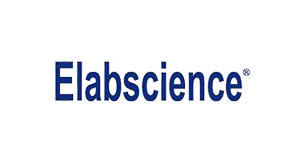Recombinant Human NKG2D/CD314 Protein (aa 78-216, His Tag)(Active)
Recombinant Human NKG2D/CD314 Protein (aa 78-216, His Tag)(Active)
Artikelnummer
ELSPKSH031517-100
Verpackungseinheit
100 µg
Hersteller
Elabscience Biotechnology
Verfügbarkeit:
wird geladen...
Preis wird geladen...
Active protein: YES.
Activity: 1. Immobilized human His-NKG2D (78-216) at 10 μg/ml (100 μl/well) can bind human ULBP1-Fch, The EC50 of human ULBP1-Fch is 0.04-0.08 μg/ml.2. Immobilized human His-NKG2D (78-216) at 10 μg/ml (100 μl/well) can bind human MICB-Fch, The EC50 of human MICB-Fch is 15.9-37.1 ng/ml.
Protein Construction: A DNA sequence encoding the human NKG2D (Phe78-Val216) was fused with a polyhistide tag at the N-terminus.
Sequence: Phe78-Val216.
Fusion tag: N-His.
Accession: NP_031386.2.
Purity: > 90 % as determined by reducing SDS-PAGE.
Endotoxin: < 1.0 EU per µg of the protein as determined by the LAL method.
Mol Mass: 18.4 kDa.
Formulation: Lyophilized from sterile 20mM Tris, 500mM NaCl, pH 8.0, 10% gly.
Background: NKG2D, also known as CD314, is an immune receptor which consists of two disulphide-linked type II transmembrane proteins with short intracellular proteins uncapable to transduce signals. In order to transduce signals, NKG2D needs adaptor proteins and it uses two adaptor proteins, DAP10 and DAP12. These two adaptor proteins associate as homodimers to NKG2D- therefore the entire receptor complex appears as a hexamer. NKG2D can send co-stimulatory signals to activate CD8 T cells. NKG2D also plays an important role in viral control. Cellular stress can induce ligands for NKG2D which results in the cell susceptible to NK cell-mediated lysis.
Activity: 1. Immobilized human His-NKG2D (78-216) at 10 μg/ml (100 μl/well) can bind human ULBP1-Fch, The EC50 of human ULBP1-Fch is 0.04-0.08 μg/ml.2. Immobilized human His-NKG2D (78-216) at 10 μg/ml (100 μl/well) can bind human MICB-Fch, The EC50 of human MICB-Fch is 15.9-37.1 ng/ml.
Protein Construction: A DNA sequence encoding the human NKG2D (Phe78-Val216) was fused with a polyhistide tag at the N-terminus.
Sequence: Phe78-Val216.
Fusion tag: N-His.
Accession: NP_031386.2.
Purity: > 90 % as determined by reducing SDS-PAGE.
Endotoxin: < 1.0 EU per µg of the protein as determined by the LAL method.
Mol Mass: 18.4 kDa.
Formulation: Lyophilized from sterile 20mM Tris, 500mM NaCl, pH 8.0, 10% gly.
Background: NKG2D, also known as CD314, is an immune receptor which consists of two disulphide-linked type II transmembrane proteins with short intracellular proteins uncapable to transduce signals. In order to transduce signals, NKG2D needs adaptor proteins and it uses two adaptor proteins, DAP10 and DAP12. These two adaptor proteins associate as homodimers to NKG2D- therefore the entire receptor complex appears as a hexamer. NKG2D can send co-stimulatory signals to activate CD8 T cells. NKG2D also plays an important role in viral control. Cellular stress can induce ligands for NKG2D which results in the cell susceptible to NK cell-mediated lysis.

 English
English










